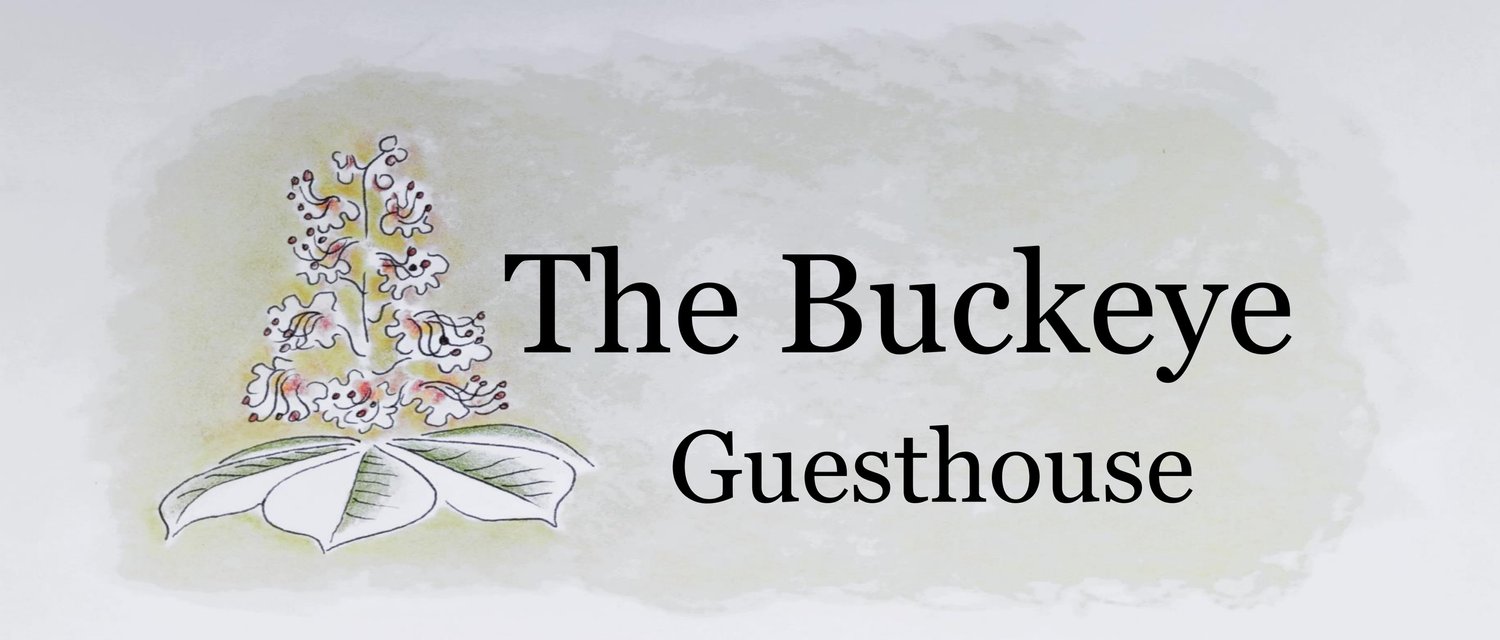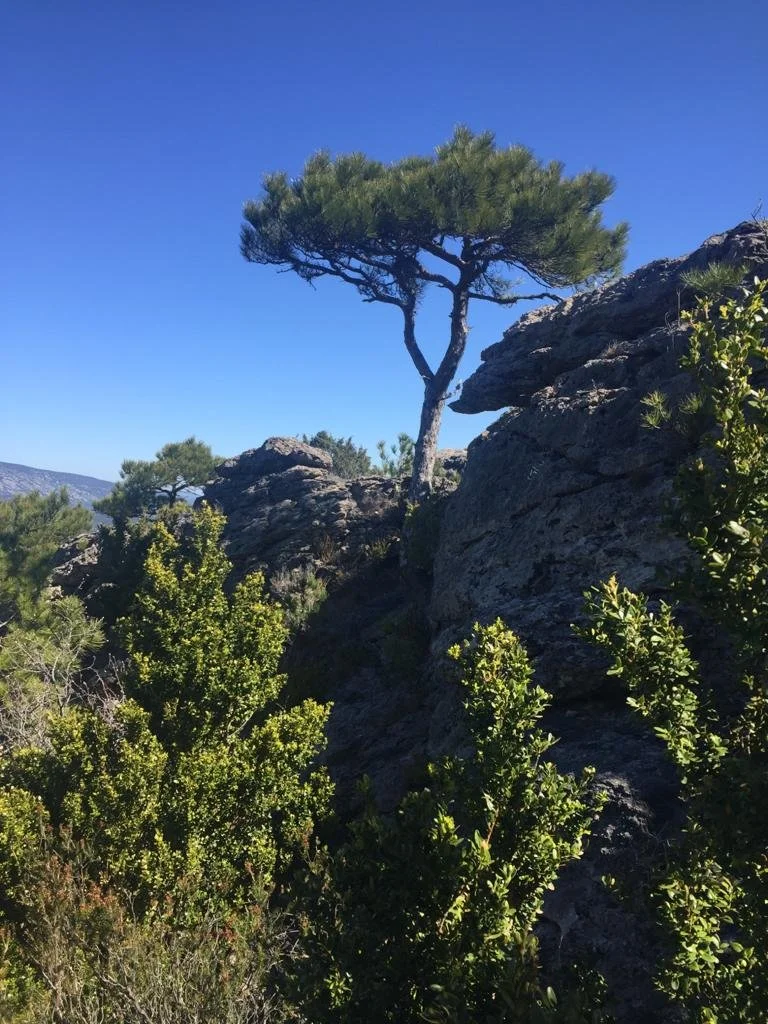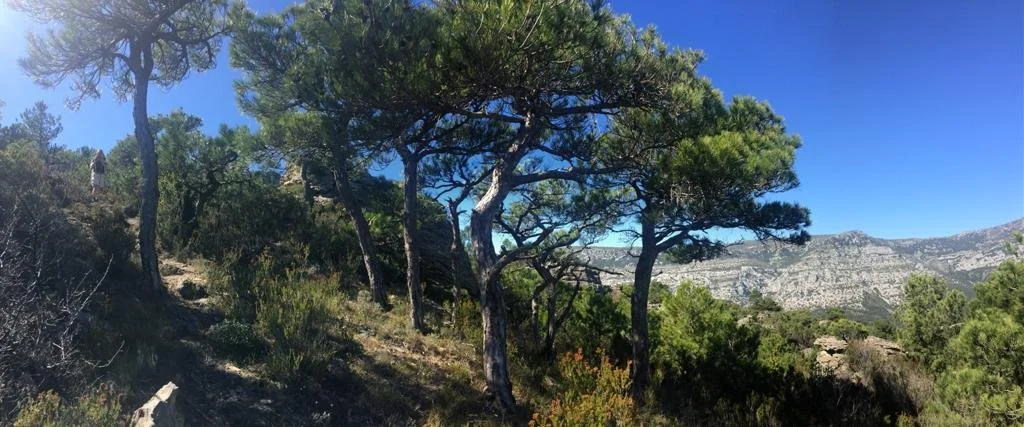
Chestnut and Pines
A mixed conifer forest thrives at the same altitude and below the beechwoods. Then comes the chestnut woods, blended with pine trees and oaks.
The chestnut has an important history in the Cévennes, historically the mainstay of the local diet, used to make flour in a region where the cultivable terrain was prioritized for pasture rather than wheat fields. The Museum of Cevenole Valleys in St. Jean du Gard (15 minutes from the Buckeye) presents this topic in fascinating detail.
Left: A chestnut forest in the fall
Right: A dwarfed chestnut tree on a rock outcropping
Today we see the remnant population of what would have been significant orchards on the terraces of the valley slopes. The chestnut tree has a “suckering” habit – it sends up shoots around the mother trunk. Often the ancient center of a tree will be hollow and dead, yet there are living parts rising from it. One sees many dead standing chestnut elders around farms today, as the people here revere them, understandably.
The many species of pines are mixed in with all the forests. Shown here are 2 species that grace some of the rocky landscapes. Salzmann pines are endemic in the region and their population is diminishing, unfortunately. They crown outcroppings or ridges poignantly.
Scott pines, though not native, are very happy here. Their salmon-colored bark and sinuous, meandering trunks are a great prelude to a forest nap.













